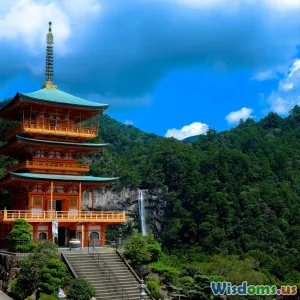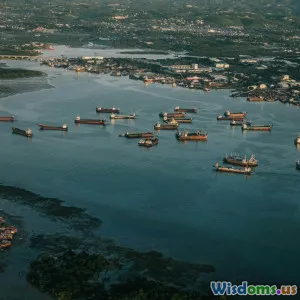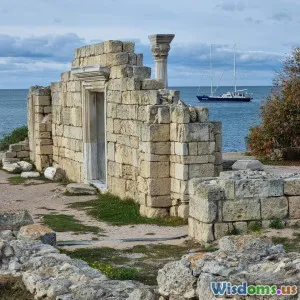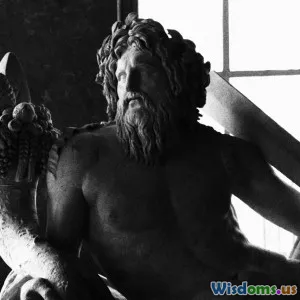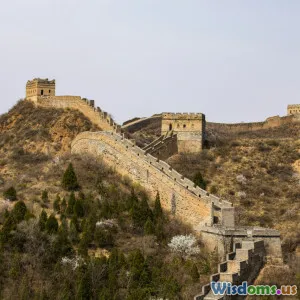
Comparing Olmec and Maya Ritual Ceremonies Explained
34 min read A clear comparison of Olmec and Maya ritual ceremonies, from shamanic offerings to royal bloodletting and ballgame rites, with context, examples, and archaeological evidence. (0 Reviews)
Ritual wasn’t a side note to Olmec and Maya life; it was the script that bound sky, earth, and society into a single, comprehensible story. From rubber balls sunk into sacred springs to rulers drawing blood to open a path for gods and ancestors, ceremonial acts were the engines of legitimacy, identity, and cosmic balance. Yet the Olmec (c. 1600–400 BCE) and the Maya (spanning Preclassic to Postclassic periods, with Classic apex c. 250–900 CE) staged those acts differently in their landscapes, materials, and political theaters. Understanding how—and why—those differences emerged offers a sharper, more human picture of Mesoamerica’s deepest traditions.
Olmec and Maya at a Glance: Time, Place, and Purpose

The Olmec heartland stretched along the humid Gulf Coast lowlands of modern Veracruz and Tabasco in Mexico. San Lorenzo, La Venta, and Tres Zapotes dominated this mosaic of riverine plateaus and wetlands. The Maya world, by contrast, expanded across the Yucatán Peninsula, the Petén jungles of Guatemala, and the highlands and coastlands of Belize, Honduras, and El Salvador. They shared ideas and traded goods across a broad Mesoamerican network, but they performed their sacred obligations in distinctive ways.
Core facts and contrasts:
- Scale and duration: Olmec ceremonial centers flourished primarily in the Early and Middle Formative periods (roughly 1600–400 BCE). The Maya ritual tradition spanned over two millennia, with classic courtly ritual peaking between 250 and 900 CE.
- Political format: Olmec power often coalesced around charismatic elites whose images appear as colossal basalt heads and throne-like altars. Maya polities were city-states led by k’uhul ajaw (holy lords) who broadcast rituals via towering pyramids, stelae, and glyphic inscriptions.
- Writing and time: While the Olmec likely contributed to early calendar and iconographic conventions, the Maya developed a full writing system and a sophisticated calendar suite (Tzolk’in 260-day, Haab’ 365-day, and the Long Count) that structured elaborate ceremonial cycles.
- Ritual medium: Both traditions centered ceremony on landscapes—springs, swamps, mountains, and caves—and on materials like jade-greenstone, shell, and obsidian. Yet the Maya left a more explicit record of ritual scripts, while Olmec practice must be reconstructed from deposits, monuments, and iconography.
If you imagine Olmec ritual as an atmospheric, materially dense performance tied tightly to water, earth, and transformation, the Maya ceremony feels like that, plus a dense textual soundtrack—dates, names, and places—turning events into history.
When Time Became Sacred: Calendars, Astronomy, and Ritual Schedules

Mesoamerican rituals followed celestial rhythms. For the Maya, this is unmistakable. Period-ending ceremonies—when units of days rolled over—were public theater, marked by stela dedications, incense offerings, dances, and bloodletting. Dates carved in stone anchor ceremonies at Tikal, Copán, and Quiriguá to precise cosmic beats.
For the Olmec, direct dates are rare, but astronomic order still structured ceremony. A striking line of research, including large-scale LiDAR mapping, has shown that early ceremonial complexes across the Gulf Coast and western Maya lowlands often align to sunrise positions that segment the agricultural year in 260-day intervals. That 260-day rhythm—later core to Maya ritual time as the Tzolk’in—may already have choreographed gatherings as early as 1100–750 BCE in the broader Formative sphere. The giant platform at Aguada Fénix (Tabasco), though Maya, sits in the Olmec–Maya interaction zone and points to shared early planning around celestial events.
Practical outcomes:
- Farming calendars: Alignments to specific sunrise points likely signaled planting and harvesting windows, knitting ritual to subsistence.
- Political timing: Rulers could stage enthronements or major offerings on dates enhanced by cosmic significance, amplifying authority.
- Memory anchors: Recurring celestial markers created a calendrical “grid” on which people remembered events and obligations.
Takeaway: Maya inscriptions make ritual time explicit; Olmec architecture makes it palpable. Both tuned human action to the sky, transforming weather anxieties and harvest hopes into ceremony.
Landscapes of Ceremony: Water, Mountains, and the Built World

The Olmec turned watery, marshy lowlands into ceremonial theaters. San Lorenzo’s engineers laid basalt-lined drains, channeling water under platforms and plazas—hydraulic performance tied to rainmaking and fertility. La Venta’s earthen pyramids, clay platforms, and buried serpentine mosaics created a layered cosmos beneath visitors’ feet. Wetland springs like El Manatí became portals for offerings that the earth literally swallowed.
The Maya amplified natural features—caves, sinkholes, and hills—into formal sanctuaries. Mountain-temples (witz) rose as stepped pyramids, with sanctuaries at the summit as mini-mountains where gods could descend. Caves like Naj Tunich hosted torchlit rites with paintings and inscriptions; cenotes near Chichén Itzá received offerings in water-filled chasms that were read as entrances to the underworld.
Examples to ground the comparison:
- Olmec San Lorenzo: Basalt drains snake under plazas; water controlled and displayed becomes a ritual instrument.
- Olmec La Venta: Complex A concealed serpentine block pavements and massive greenstone caches, all buried—ritual as creation of a sacred underworld.
- Maya Tikal: Temple pyramids punctuate the skyline; ceremonies unfolded atop and around them, with incense drifting over great plazas bounded by stelae.
- Maya Chichén Itzá: The Sacred Cenote accepted offerings of jade, gold, and human remains, embedding sacrifice in a karst landscape.
Pattern: Both traditions built architectural metaphors of the cosmos. The Olmec emphasized vertical layering through buried offerings and waterworks; the Maya emphasized vertical ascent and visibility, with temples and stelae making ritual legible to large audiences.
Blood, Breath, and Paper: Autosacrifice Across Eras

Autosacrifice—offering one’s own blood—was central to Maya court ritual. Kings and queens drew blood from tongue, ears, or genitals using stingray spines, obsidian blades, or bone awls. Blood dripped onto bark-paper (amatl) that, when burned, released fragrant smoke—a medium in which vision serpents and deities could manifest. The Yaxchilán lintels (notably Lintel 24, c. 709 CE) show Lady K’ab’al Xook pulling a thorned cord through her tongue as her husband holds a torch. The next panel conjures the Vision Serpent: ritual as a meeting point of pain, breath, and divine presence.
For the Olmec, the evidence for autosacrifice is more inferential but persuasive. Carved greenstone celts, incised with figures holding bloodletting implements, and caches of obsidian blades suggest controlled self-bloodletting. Miniature scenes—like La Venta’s Offering 4—stage ritual participants facing polished celts planted like symbolic stelae, hinting at spoken invocations and perhaps blood permissively given. The were-jaguar motif—human infants with feline traits—has often been linked to rain and fertility, and some scholars read Olmec imagery as shamanic trance or transformation achieved through breath control, fasting, and bloodletting.
Key differences:
- Documentation: Maya texts use the verb ch’ahb’ for bloodletting, naming actors and dates. Olmec ritual is text-light and object-heavy, demanding interpretation from context.
- Theater: Maya ceremonies unfolded in courts and plazas, with potential thousands in view; Olmec bloodletting may have been staged for smaller courts or conducted at hidden altars and caches, the drama preserved underground rather than in writing.
What unites them is a logic: blood is life and warmth; returning a portion to the gods activates reciprocity and communication. Breath, incense smoke, and blood together create a pathway between worlds.
Sanctified Death: Sacrifice, Ancestors, and the Price of Balance

The Maya record includes unambiguous human sacrifice. Heart extraction, decapitation, and offerings of captives punctuated war victories and major calendrical moments. Chichén Itzá’s Great Ballcourt reliefs, though from a later, hybrid tradition, show a decapitated player with serpents and plants sprouting from the neck—life reborn through ritual death. Inscriptions describe captives tied to stairways or platforms during period-ending rites; bones appear in dedicatory caches under monuments.
With the Olmec, the picture is complex. At El Manatí, a spring at the foot of a hill near San Lorenzo, archaeologists found rubber balls, wooden busts, jade celts, and the remains of infants and children carefully deposited between roughly 1600 and 1200 BCE. The waterlogged conditions preserved organic materials rarely seen elsewhere. Whether those children were sacrificed or venerated as deceased infants is debated, but the intentionality is clear: the spring was a portal where precious, animate bundles returned to the earth-water domain for fertility and rain.
What these acts accomplished:
- Stabilizing the world: Ritual deaths and offerings “paid” a cosmic debt, renewing cycles.
- Political messaging: The power to capture and sacrifice enemies demonstrated a ruler’s mastery over chaos and rivals, aligning secular might with sacred sanction.
- Ancestor anchoring: Interments under household floors and at public monuments bound living communities to named and unnamed dead.
Ethically, we must read these acts within their original cosmologies. For both Olmec and Maya, the living sustained the world not only through agriculture and exchange but through offerings—including of human life—at potent thresholds of water, stone, and fire.
The Ballgame as Ritual Drama and Origin Myth

The Mesoamerican ballgame was more than sport; it was a sacred drama of movement, noise, and risk. The earliest rubber balls—some dated to the Early Formative period—were recovered at El Manatí, tying the game’s origins to the Gulf Coast. Olmec monuments depict players wearing protective gear, and ballcourts appear by the Middle Formative era. The rubber itself, processed from Castilla elastica sap and mixed with juice from other plants, was a ritual material.
Among the Maya, ballcourts became canonical. Courts at Tikal, Copán, and other cities hosted games linked to myth and politics. The Popol Vuh, a K’iche’ Maya sacred narrative compiled in the colonial era from earlier traditions, recounts hero twins who descend to the underworld to play and ultimately triumph through sacrifice and rebirth. Classic Maya inscriptions tie ballgames to war, diplomatic meetings, and commemorations. Ritual paraphernalia—yokes, palmas, hachas—found especially along the Gulf Coast in later periods—speak to regional variations in costume and symbolism.
Why the ballgame mattered:
- Cosmology in motion: The bouncing ball mirrors the sun’s path; striking it with hips keeps cosmic order literally in play.
- Controlled danger: Rules channeled violence into ritualized contest; at times the stakes were life and death for captives.
- Audience integration: The thump of the ball, the calls of players, and the geometry of the court turned spectators into participants in a cosmic rehearsal.
Continuity is unmistakable: from Olmec springs to Maya carved panels, the ballgame fused play, politics, and piety.
Offerings and the Language of Materials

Materials in Mesoamerica weren’t inert; they carried biographies and powers. Jadeite and other greenstones, sourced largely from the Motagua Valley in Guatemala, were prized by both Olmec and Maya. Green signified life, maize, and vital breath. Shell from Caribbean and Pacific coasts, obsidian from highland flows, hematite mirrors, and copal resin rounded out the toolkit.
Illustrative caches:
- Olmec La Venta Offering 4: Sixteen small greenstone figurines arranged facing six upright celts—like a council before cosmic staffs—then buried. The staged mini-world remained in the earth as a perpetual ceremony.
- Olmec Massive Offerings: Thousands of serpentine blocks laid as mosaics, covered again—images no human eyes were meant to see once sealed.
- Maya dedicatory caches: Under stelae at Tikal and Copán, archaeologists find eccentric flints (lightning shapes), stingray spines, animal bones, shark teeth, and killed vessels (with ritual perforations) embedded with obsidian blades.
- Copal and bark paper: For the Maya, incense burners and censers—often beautifully modeled—hosted copal resin, whose scent was considered divine breath. Paper stained with blood and then burned created a smoky screen for vision quests.
Materials curated relationships:
- Jade kept ancestral memory; heirlooms moved across generations and polities.
- Obsidian cut the boundary between human and divine; blades were not only tools but mediators.
- Shell and shark teeth recalled watery realms; placing them in dry land caches balanced elemental forces.
Thrones, Masks, and Becoming Gods: Impersonation as Statecraft

To rule effectively, Olmec and Maya elites became other-than-human during rituals. Olmec rulers appear on altars (often called thrones) emerging from cave-mouth motifs, sometimes holding ropes tied to captives—living gateways between realms. Colossal heads, with individualized helmets and facial features, draw focus to elite identity and performance gear. Masks—sometimes with downturned jaguar mouths—suggest transformation into rain-beast or ancestor.
Maya kings and queens practiced deity impersonation as a formal office. Headdresses with quetzal feathers, jade mosaic masks, and belts bearing the lightning god K’awiil or the maize god recast the wearers as embodiments of cosmic powers. Dances and processions—documented in murals at Bonampak (c. 790 CE)—show nobles wearing elaborate outfits while musicians keep time. Vision serpent iconography makes the message explicit: blood-fed apparitions through which gods and ancestors speak, usually just as a king is showing the community a fresh stela or a bound captive.
What impersonation did:
- Thickened authority: The ruler didn’t just petition the gods; for a moment, they were the gods’ living face.
- Created tradition: Specific costumes and regalia anchored rites to dynastic histories and places, making each performance part of an unbroken line.
- Bridged worlds: Masks, headdresses, and thrones signaled thresholds—wearing and sitting were themselves acts of crossing.
Sound, Scent, and the Sensory Script

Ceremonies were designed to be felt. The Olmec used whistles and perhaps turtle carapace drums; conch shells served as trumpets. Wetland sites amplified sound and scent—humid air carrying conch blasts over water while incense hung low among reeds.
The Maya orchestrated full sensory suites:
- Sound: Drums, rattles, conch trumpets, and the hard clack of the ball. Bonampak’s murals depict musicians synchronizing the ritual with beats and chants.
- Scent: Copal incense burned in censers, thickening the air with resinous sweetness; burning paper created acrid edges to the scent-scape.
- Sight: Feathers, jade, and firelight flickered in plaza darkness; torchlit caves made paint and glyphs animate.
- Touch and pain: Bloodletting was not symbolic alone; it had texture—the sting of a spine, the weight of a cord, the warmth of flowing blood.
Sensory design fused memory with meaning. A child who smelled copal during a royal anniversary may recall that scent decades later as intimately tied to order and well-being.
Feasting, Gifts, and the Economics of Devotion

Ritual economies feed bodies while they bind communities. In Olmec centers, faunal remains—fish, turtles, deer—accompany ceremonial deposits, pointing to feasting as part of gatherings. Jade celts and finely made ceramics offered to the earth or water were costly gifts, signaling elite capacity to mobilize labor and rare goods.
Among the Maya, feasting could be prodigious. Large jars hint at fermented beverages; ethnohistoric accounts describe balché, a ceremonial drink made from fermented honey and bark infusion, likely with earlier roots. Chemical residues in vessels show cacao use—chocolate as a precious, ritualized drink. Painted ceramics depict tamales and maize deities: food wasn’t only consumed; it was iconized.
Ritual distribution of food and gifts served multiple goals:
- Reciprocity: The community witnessed elites giving away goods to gods and people—generating loyalty.
- Calendar anchors: Feasts aligned with planting and harvest; taste marked time.
- Social sorting: Seating, serving order, and special foods differentiated status while still creating shared experience.
How Archaeologists Read Rituals: Methods and Cautions
We often think ritual is hidden, but archaeological methods coax its outlines from the ground:
- Context and stratigraphy: Buried offerings beneath platforms or stelae indicate deliberate dedication. Sequences of construction stages show repeated ritual renewal.
- Residue analysis: Chemical signatures identify copal on burners, cacao in cups, blood proteins on blades, and plant resins on rubber balls.
- Use-wear and breakage patterns: Perforated vessels show deliberate “killing” before offering; abraded spines indicate ritual use rather than random discard.
- Iconography and epigraphy: Maya glyphs decode the “what, when, who,” while Olmec motifs suggest themes—rain beast, cave portals, rulers in trance.
- Landscape archaeology: Alignments and site planning reveal cosmological frameworks—sunrise over a particular hill on a named date, or water managed as sacred performance.
Caution is essential. Not all caches are “sacrificial,” and not all burials are ritual rather than pragmatic. The temptation to map later Maya meanings onto earlier Olmec imagery can mislead. Cross-checking material patterns with region, chronology, and ethnographic analogies produces more reliable readings.
Three Windows into Ceremony: El Manatí, La Venta, and Yaxchilán

Case Study 1: El Manatí’s Water Portal
- What was found: Rubber balls, wooden busts, jade celts, and the remains of infants and children in a spring at the base of a hill, dating to the Early Formative period.
- Why it matters: It offers rare preservation of organic ritual objects—wooden sculptures otherwise vanished elsewhere—showing that early Gulf Coast people invested in watery portals with costly, symbolically dense offerings.
- Insights: Rubber balls here were not just game equipment; they were votives. Children may have been liminal beings, their deaths or memories especially potent in petitions for rain and fertility.
Case Study 2: La Venta Offering 4’s Miniature Council
- What it is: A buried tableau of greenstone figurines arranged to face six upright celts, discovered at La Venta. The scene may have been configured, reconfigured, and then interred.
- Why it matters: It captures performance embedded in the ground. The arrangement makes ritual permanently ongoing—figures eternally addressing cosmic emblems—while remaining unseen after burial.
- Insights: Olmec ceremony prized permanent acts; sealing offerings created a durable, latent charge in the landscape.
Case Study 3: Yaxchilán Lintels 24–26 and Vision Serpents
- What they show: The royal couple practicing autosacrifice; Lady Xook draws a thorned rope through her tongue, and a serpent vision appears with a warrior emerging from its jaws.
- Why it matters: Texts anchor the scenes to a specific date and actors, turning a painful rite into a public record of sanctioned vision and political alliance.
- Insights: Maya ceremony made the invisible visible. Spectators saw stone images of an event structured by time-keeping, performed atop architecture that itself encoded cosmology.
Continuity, Influence, and Reinvention Across Centuries

Were the Maya simply heirs to Olmec rituals? Influence flowed, but not as a single line of descent. The Gulf Coast and Maya lowlands participated in overlapping exchange networks. Ideas about greenstone, water portals, and celestial alignment appear early in both spheres. Epi-Olmec and Izapan traditions on the Pacific slope bridge thematic and artistic elements between the Formative and Classic eras.
Continuities include:
- Greenstone’s sacred status and burial in caches.
- Rituals bound to water sources and caves as portals.
- Ballgame symbolism connecting movement, risk, and cosmic order.
Transformations include:
- The Maya’s development of systematized writing and calendar rituals that rendered ceremony historical.
- The expansion of public theater—tall pyramids and broad plazas multiplied ritual visibility.
- Iconographic specificity: Maya gods, dates, and names anchor scenes; Olmec imagery remains more open-ended and shamanic in tone.
Think of the Maya not as copying the Olmec, but as taking shared Mesoamerican ritual grammar and composing more text-rich, performative variations.
How to Read a Ritual Scene in a Museum or at a Site

Use this step-by-step approach to decode sculptures, murals, or artifact displays:
- Locate the threshold: Is there a cave-mouth motif, water symbol, or mountain-temple backdrop? Thresholds signal ritual contexts.
- Identify the agent: Is a ruler or noble central? Look for headdress scale, seated posture on a throne-altar, or attendants.
- Spot the instruments: Stingray spines, obsidian blades, bloodletting cords, incense burners, jade celts, copal lumps—each implies specific rites.
- Read gestures: Tongue cords, raised torches, dance steps, or ballgame stances indicate action types—autosacrifice, conjuring, procession, play.
- Scan for vision frames: Serpents, smoke scrolls, mirrors, and skeletal beings often mark trance and appearance of otherworld beings.
- If glyphs are present: Look for Long Count dates (bar-and-dot numerals), the name of the ruler, and verbs like “ch’ahb’” (bloodletting) or “k’al” (tying/fastening) tied to dedicatory acts.
- Consider materials: Greenstone equals life force; shell equals water/sea; obsidian equals lightning and cutting; copal equals divine breath.
- Place it in time: Early Formative Olmec pieces won’t have Maya glyphs; Classic Maya works will specify dates and names—use that to calibrate expectations.
By layering these clues, you reconstruct not just an image but a sequence of actions—who did what, for whom, with what, and why.
Visiting Places of Ceremony Today: Practical Tips and Respectful Habits

If you plan to experience these spaces in person:
- Gulf Coast Olmec heartland: San Lorenzo’s remains lie across a rural landscape; La Venta’s monumental sculptures were moved to the Parque-Museo La Venta in Villahermosa—a curated setting where you can see colossal heads and altars up close. Tres Zapotes offers stelae and a museum context.
- Maya cities: Tikal’s pyramids rise from jungle; climbing permitted on select structures changes your sense of performance space. Palenque’s temples frame waterfalls and dense forest; Copán’s acropolis and ballcourt preserve refined sculpture and inscriptions. Chichén Itzá’s Great Ballcourt and Sacred Cenote illustrate scale and hydrology.
Respect and observation tips:
- Mind the thresholds: Caves and cenotes remain sacred to descendant communities. Avoid leaving objects or taking “souvenirs.”
- Sensory awareness: Attend to soundscapes—the damp hush of a cenote, bird calls across a plaza—and imagine how drums and conches once filled them.
- Read signage: Many sites now include interpretive panels about rituals; take photos of these to cross-reference later.
- Museum etiquette: When viewing caches or incense burners, look for residue analysis notes; these details unlock the lived ritual behind objects.
Five Practical Insights for Educators, Writers, and Curious Travelers

- Use comparisons to teach method: Ask students to contrast La Venta Offering 4 with a Yaxchilán lintel. One is buried and textless, the other visible and textual. How do we extract meaning differently from each?
- Reconstruct sensory anchors: Have learners smell frankincense or pine resin as a proxy for copal and listen to recorded conch blasts to envision the sensory field of a ceremony.
- Map the sky: Use simple sunrise azimuth apps at home to simulate how a 260-day rhythm could have structured agricultural rites; then compare with site orientation diagrams.
- Decode a scene: Hand out line drawings of Maya stelae. Identify costumes, glyphs, and offerings, and draft a “ritual script”—who, what, when, where—like a theater program.
- Ethical storytelling: When discussing sacrifice, foreground indigenous cosmologies of reciprocity and renewal, avoiding sensationalism while not erasing the gravity of the acts.
What the Comparison Tells Us About Ritual, Power, and Place

Laying Olmec and Maya ceremonies side by side reveals both a shared Mesoamerican grammar and strikingly different dialects. The Olmec crafted rituals that saturated earth and water with durable offerings—mosaics, celts, wooden effigies, and rubber balls—often concealed from view once completed. Their theaters spoke through buried depth, hydraulic motion, and the suggestive poetics of masks and altars.
The Maya, building on that grammar, amplified ritual into public, literate spectacle. They nailed ceremonies to the calendar, named the actors, and elevated performances onto sky-scraping pyramids. Bloodletting moved from implied to narrated, while incense, dance, and ballgame play became set pieces in a history that people could read on stone.
Both traditions share an insistence that the world requires maintenance—that crops do not grow, rains do not fall, and communities do not cohere without costly, carefully timed exchanges across the visible and invisible. Their different solutions—buried underworld councils versus carved histories of conjured serpents—answer the same human need: to bind fragile lives to vast cycles in ways that feel both persuasive and beautiful.
So the next time you face a greenstone figurine arrayed before celts in a museum, or stand in the shadow of a Maya temple with stelae lined like a forest of stone calendars, read them together. Hear the conch. Smell the resin. Feel the rope’s pull and the ball’s thump. The ceremony, even now, is still unfolding.
Rate the Post
User Reviews
Popular Posts










